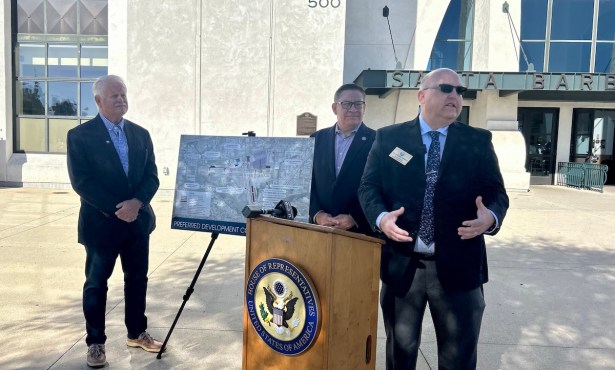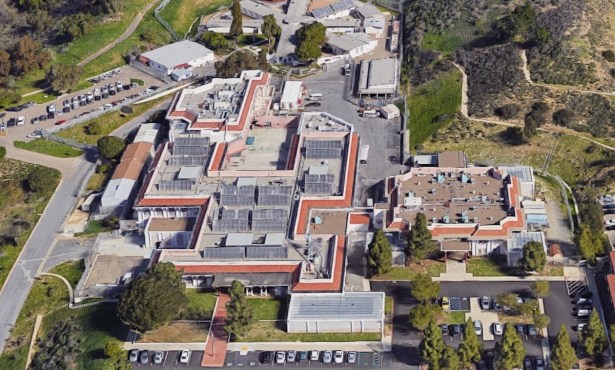California Decreases Value of Home Solar Energy to the Grid
Adds Incentives for Solar on Low-Income Rooftops

Electricity, and the means to generate it, hinges on a number of rapidly changing resources: water behind dams, factory staffing in China, sun and clouds, and now the new rooftop-solar billing rules released by the state Public Utilities Commission (CPUC) last week. Though the rules are intended to further California’s goals toward fewer greenhouse gases from fossil-fuel power sources, the decision is being slammed from all sides: The solar industry argues fewer incentives mean fewer households will choose to install expensive solar panels. Consumer groups say the subsidy for existing solar rooftops will unfairly continue.
Administrative Law Judge Kelly Hymes, who wrote the lengthy CPUC decision, sees solar costs going down. In fact, she estimated that prices were declining so quickly that five years was long enough for the solar industry and customers to need less of a subsidy. The details are just about as complicated as buying electricity on the futures market, but here they relate to new residential solar installations after April 2023. Existing home solar billing will not change, Judge Hymes wrote.
A fact sheet assembled by the CPUC estimated that on average, the new Net Billing Tariff would take up to $100 off a monthly electric bill, and up to $136 off if battery storage is installed. To estimate what consumers will receive from exported energy per kilowatt-hour, the CPUC employs something called the Avoided Cost Calculator (ACC), which is based on the value of electricity to the grid, or wholesale price, which changes with time of day and season. But even Hymes acknowledged the ACC might be a shock to the solar industry, so various pennies are tagged on over the next five years. The sum total is supposed to pay off the setup in nine years. (Nonresidential solar pricing is per the ACC alone, as costs are paid off in nine years or less, according to the CPUC.)
This is a large change from the previous net-energy-metering game plan, known as NEM 2.0, which pays 90 percent of the retail price for exported electricity. Ron Gales of SoCal Edison explained that the retail price includes costs like transmission lines and employee salaries, or the overhead for the utility company that is absent from the wholesale price. For utility companies, this mattered, as they were unable to recapture the full cost of maintenance and upgrades for their miles of lines. Energy imported, or sold to customers when the sun goes down, is at the full retail price.

Stephen Honikman works in the solar industry and grew up in Goleta in a solar-powered home. He’s also just about to apply for a permit to put panels on his own roof, in order to lock in NEM 2.0 prices, because he doubts hard costs are going to continue to drop. He’s also fairly certain the NEM 2.0 price is better for him than the new tariff the CPUC will implement in April.
“The biggest change in the Avoided Cost Calculator is that instead of paying close to the retail rate for exported energy, you get the price the utility is charged to buy in the wholesale market,” Honikman said. He went on to explain that utilities buy in large wholesale lots in advance for the best prices, calculating what their future need will be. “The amount that will be paid is the avoided wholesale rate, or what the utility didn’t have to buy. It’s no longer a credit against the retail rate.”
The other provocative piece in the energy argument has been whether the dollars saved by solar owners in exporting energy ended up being paid by those without rooftop solar. In her decision, Judge Hymes both said, yes, NEM 2.0 was unfair, but also that the greening of the energy grid was ultimately a benefit for all of society. To level the playing field somewhat, more pennies per kilowatt-hour will be added to the Avoided Cost Calculator Plus, or the ACC Plus “adder,” for households in the billing assistance programs CARE and FERA. Interestingly, ACC Plus and the “adder” are only for customers of SoCal Edison and PG&E. California’s third energy producer, San Diego Gas & Electric, already pays a high rate for electricity exported by its solar homeowners and needed no extra subsidy, Hymes wrote.
Sign up for Indy Today to receive fresh news from Independent.com, in your inbox, every morning.
As well, the California Legislature passed, and Governor Newsom signed in September, Assembly Bill 290, which added $900 million toward solar and battery setups to the 2022-2023 budget: 70 percent, or $630 million, is for low-income customers for equity reasons. Baked into the decision are reviews after three and five years to see if the new rules achieve equity or affordability. Also, over the five years of ACC Plus, the adders decrease by 20 percent each year.
Doing the math, $100 or $136 off a monthly electricity bill might cover the costs of a solar array and battery — roughly $15,000 and $10,000 — if the federal incentive is added. The Biden administration’s Inflation Reduction Act (IRA) extends a 30 percent tax deduction to homeowners for solar installations through 2032. Nonprofits and municipalities can convert what would be a tax break into cash, per the IRA, though the details have yet to arrive from the IRS.
For anyone living inland, the credit would hardly cover the big power needs of air conditioning in the summer months and heat the rest of the year, Honikman pointed out. Permit and site issues could also change costs and power generation drastically.

State Senator Monique Limón was also concerned about the larger picture. “I question whether the right balance was met, given that California needs more sources of clean energy, and fast. Rooftop solar still has to be an element of our climate goals,” she said. “Last year the California Energy Commission projected that we would have a deficit of 1,800 megawatts by 2025. This is why the California Legislature took large steps last year to streamline new energy projects coming online, and extending the life of other power plants.”
The extreme heat late last summer underlines California’s dependence on electricity and the emphasis on battery storage incentives in the new rules. As wholesale prices for power shot up to $2,000 per megawatt hour in September, the Independent System Operator was begging Californians to keep their thermostats at 78 degrees. Power consumption regularly soars from 4-9 p.m., right as solar sources stop delivering. Comparatively, the wholesale price was ranging from $200-$300 on a mild, winter morning this week.

The City of Santa Barbara was among the early adopters of municipal solar panels and set up its own power-buying system, overseen by Alelia Parenteau, the director of Sustainability and Resilience. She agreed that batteries were essential to bridging the early evening gap. “Ensuring a balance between incentivizing renewables and having a fair distribution of costs of the electrical distribution system is necessary,” Parenteau said. “There is a lot of focus in the decision on pairing solar with battery storage, so the rates can still be favorable if batteries are installed. We do agree that this is a key step.”
“We’re accustomed to a 24/7 grid,” said Stephen Honikman. “It’s an amazing system that’s a socialized investment.” And for when the sun sets on California’s solar arrays, he said, “We all want our power at night, too.”
Support the Santa Barbara Independent through a long-term or a single contribution.




You must be logged in to post a comment.